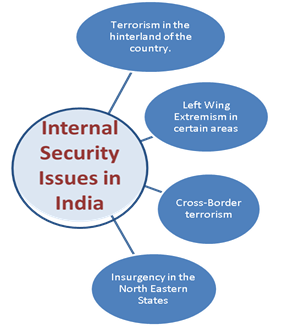Internal security issues in the country are as follows:

(a) Naxalism & Left-wing Extremism (LWE)
Left Wing Extremism (LWE) is widely recognised as one of the most serious security threats in post-independence India.
The Left Wing Extremism (LWE) scenario, while remaining an area of concern for internal security of the country has shown a significant improvement in recent years. There has been an overall 50.2 percent reduction in violent incidents (12,598 to 6,275) and 66 percent reduction (4,961 to 1,687) in LWE related deaths in the period May 2014-Oct 2021 as compared to the ....